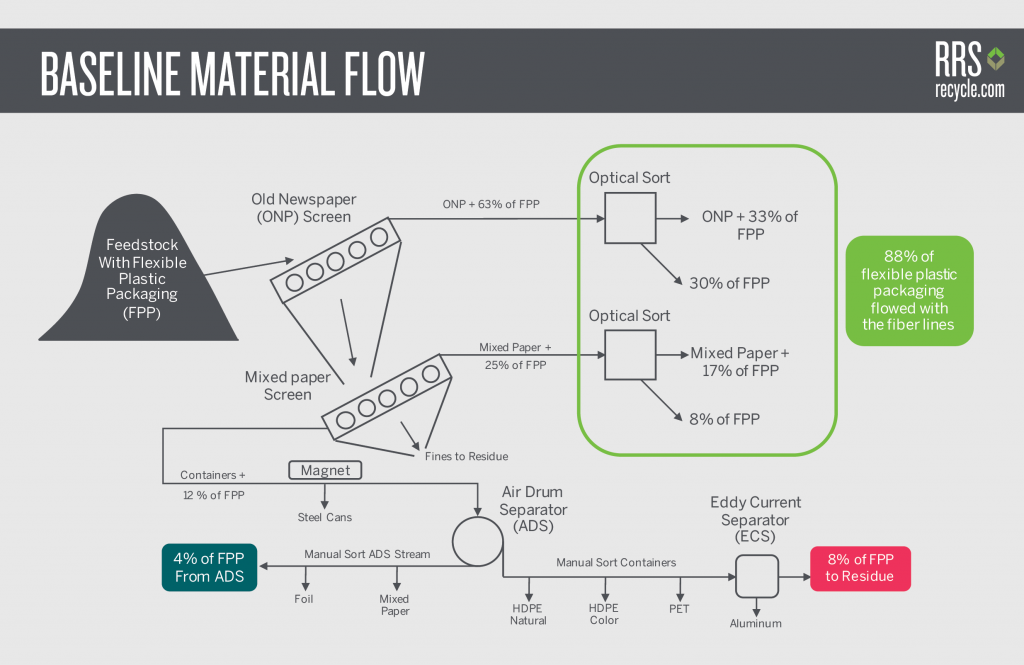Have you ever stopped in an aisle at the grocery store and noticed how many items are now sold in flexible plastic packaging? From baby food to tuna fish, laundry detergent pods to pet food, many items once sold in glass or rigid plastic packaging are now sold in lightweight flexible packaging. And while flexible plastic packaging offers many benefits, such as increased resource efficiency, better product protection, and lower environmental impact, most flexible plastic packaging cannot be recycled – yet.
 But new research shows that there could be a way to recover this packaging using technology already in place. The Materials Recovery for the Future (MRFF) collaborative developed a research program that looked at the ability to effectively recover flexible plastic packaging at a single-stream materials recovery facility (MRF). The research, conducted by Resource Recycling Systems, found that automated sorting technologies already used at MRFs today can be optimized to efficiently capture flexible plastic packaging. This could create a new stream of recovered materials while improving the quality of other recycling streams.
But new research shows that there could be a way to recover this packaging using technology already in place. The Materials Recovery for the Future (MRFF) collaborative developed a research program that looked at the ability to effectively recover flexible plastic packaging at a single-stream materials recovery facility (MRF). The research, conducted by Resource Recycling Systems, found that automated sorting technologies already used at MRFs today can be optimized to efficiently capture flexible plastic packaging. This could create a new stream of recovered materials while improving the quality of other recycling streams.
The MRFF collaborative – which includes brand owners, manufacturers, and packaging industry organizations – is moving into its second phase of research. The research will focus on further refinements to sorting technology, characterizing the flexible plastic packaging bale for use by downstream recyclers, and developing a recovery facility demonstration project.
To view the report and infographics, or learn how your company can get involved, visit www.materialsrecoveryforthefuture.com.
MRFF members include Amcor, The Dow Chemical Company, LyondellBasell, Nestlé Purina PetCare and Nestlé USA, PepsiCo, Plum Organics, The Procter & Gamble Company, SC Johnson, Sealed Air, and Target as well as the Association for Postconsumer Plastic Recyclers (APR), the Flexible Packaging Association (FPA), SPI: The Plastics Industry Trade Association (SPI), and the American Chemistry Council.





